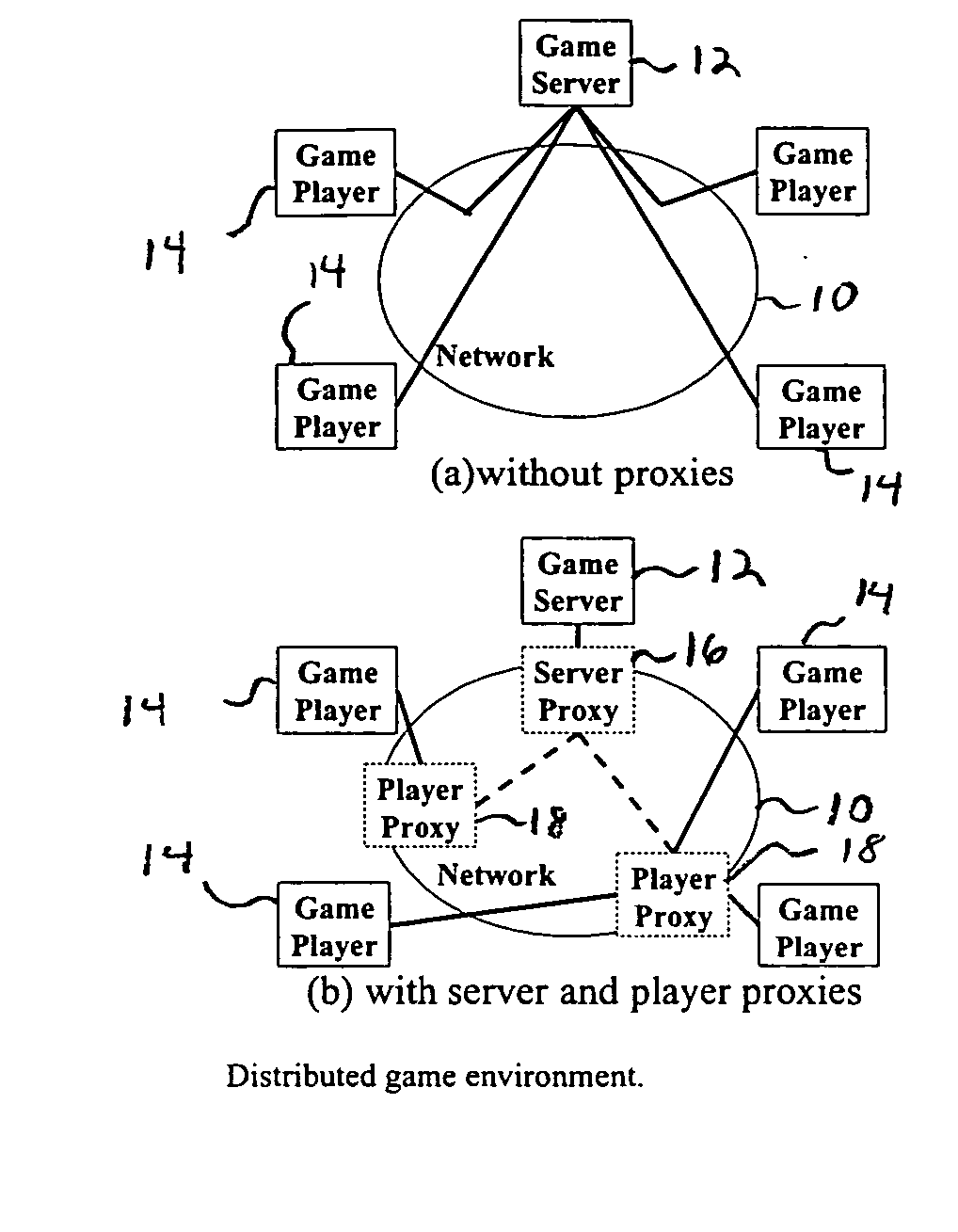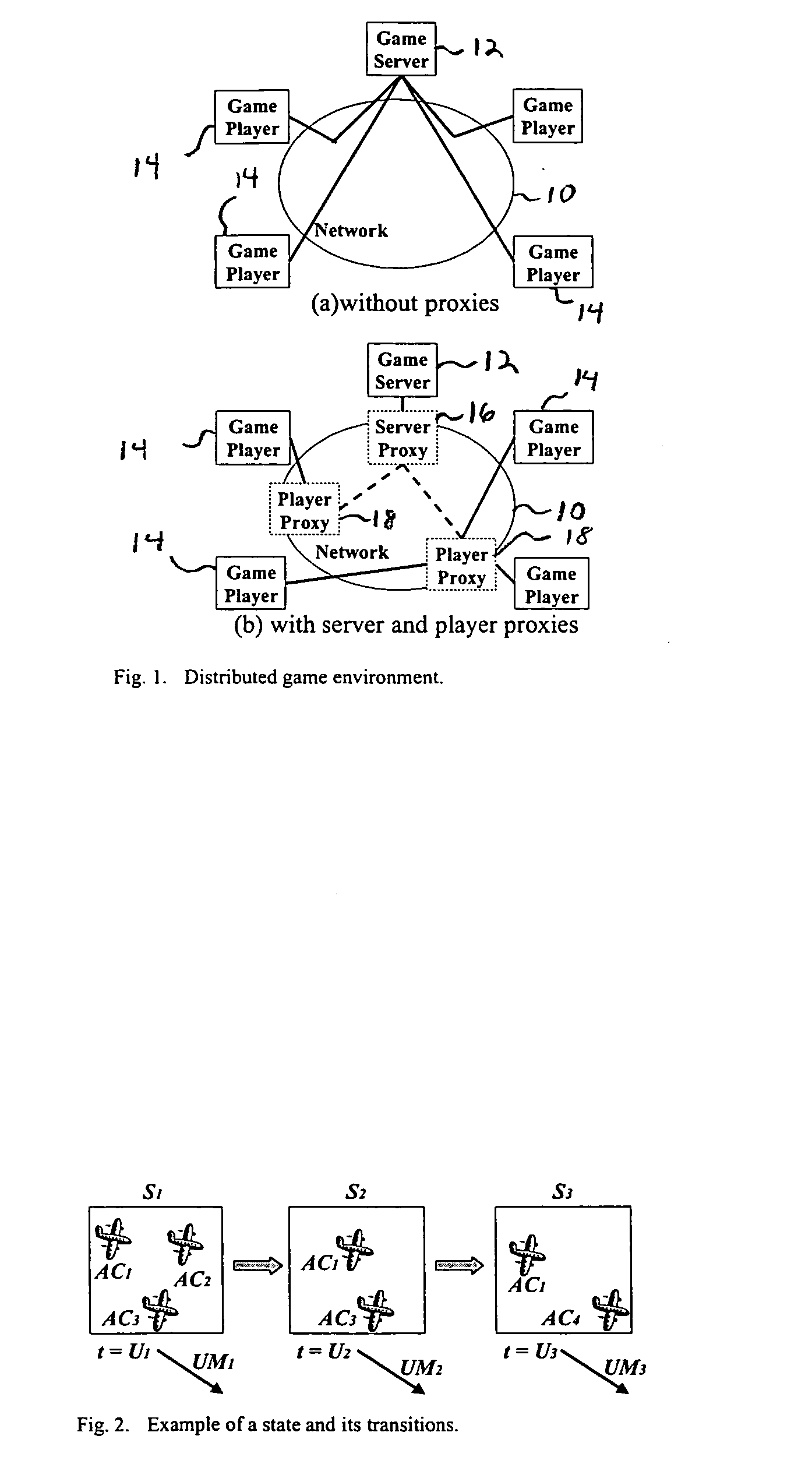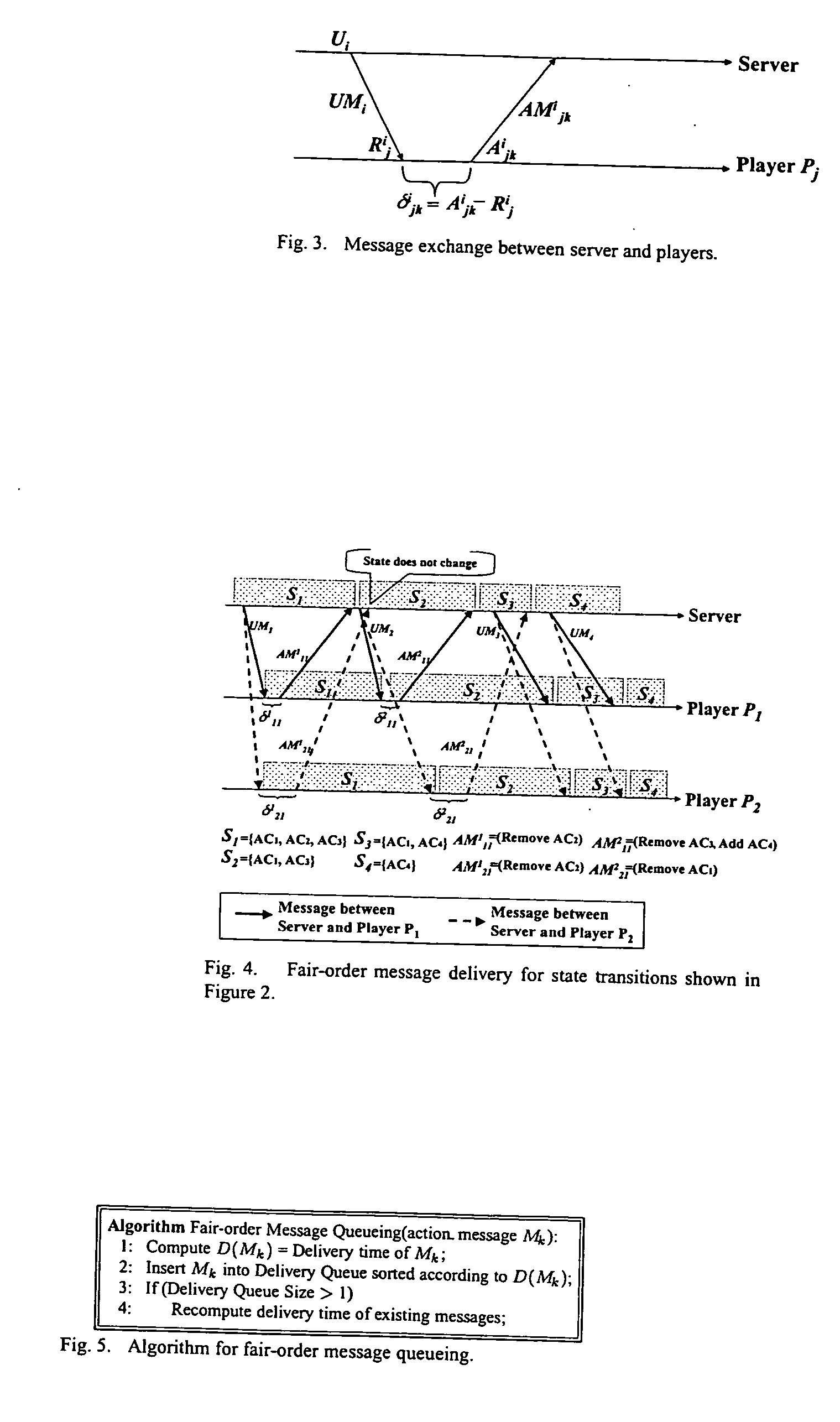Apparatus and method for fair message exchanges in distributed multi-player games
a multi-player game and message exchange technology, applied in the field of communication networks, can solve problems such as player frustration, erratic game progress, and preventing a player from responding effectively or appropriately
- Summary
- Abstract
- Description
- Claims
- Application Information
AI Technical Summary
Benefits of technology
Problems solved by technology
Method used
Image
Examples
examples
[0075] Let us consider an example, which illustrates the fair-order message delivery algorithms of the present invention by showing the computation of the delivery times. Let us take the example shown in FIG. 8 and add timing information to it. The resulting figure is shown in FIG. 9. The timing information shown is in terms of a logical clock. The delivery queue at the time of specific events is shown in the figure, on top of those events. State changes trigger update messages to be sent and for the purpose of timing calculations, it is assumed that these messages are sent instantaneously after a state change.
[0076] Referring to FIGS. 8 and 9, the game session consists of two players P1 and P2 and a Server. We use Di(AMjki) to denote the delivery time for action message AMjki corresponding to update message UMi. Assume that the wait timeouts for the two players are W1=10 and W2=15. The following describes the various sequences in the game according to the present invention as illu...
PUM
 Login to View More
Login to View More Abstract
Description
Claims
Application Information
 Login to View More
Login to View More - R&D
- Intellectual Property
- Life Sciences
- Materials
- Tech Scout
- Unparalleled Data Quality
- Higher Quality Content
- 60% Fewer Hallucinations
Browse by: Latest US Patents, China's latest patents, Technical Efficacy Thesaurus, Application Domain, Technology Topic, Popular Technical Reports.
© 2025 PatSnap. All rights reserved.Legal|Privacy policy|Modern Slavery Act Transparency Statement|Sitemap|About US| Contact US: help@patsnap.com



